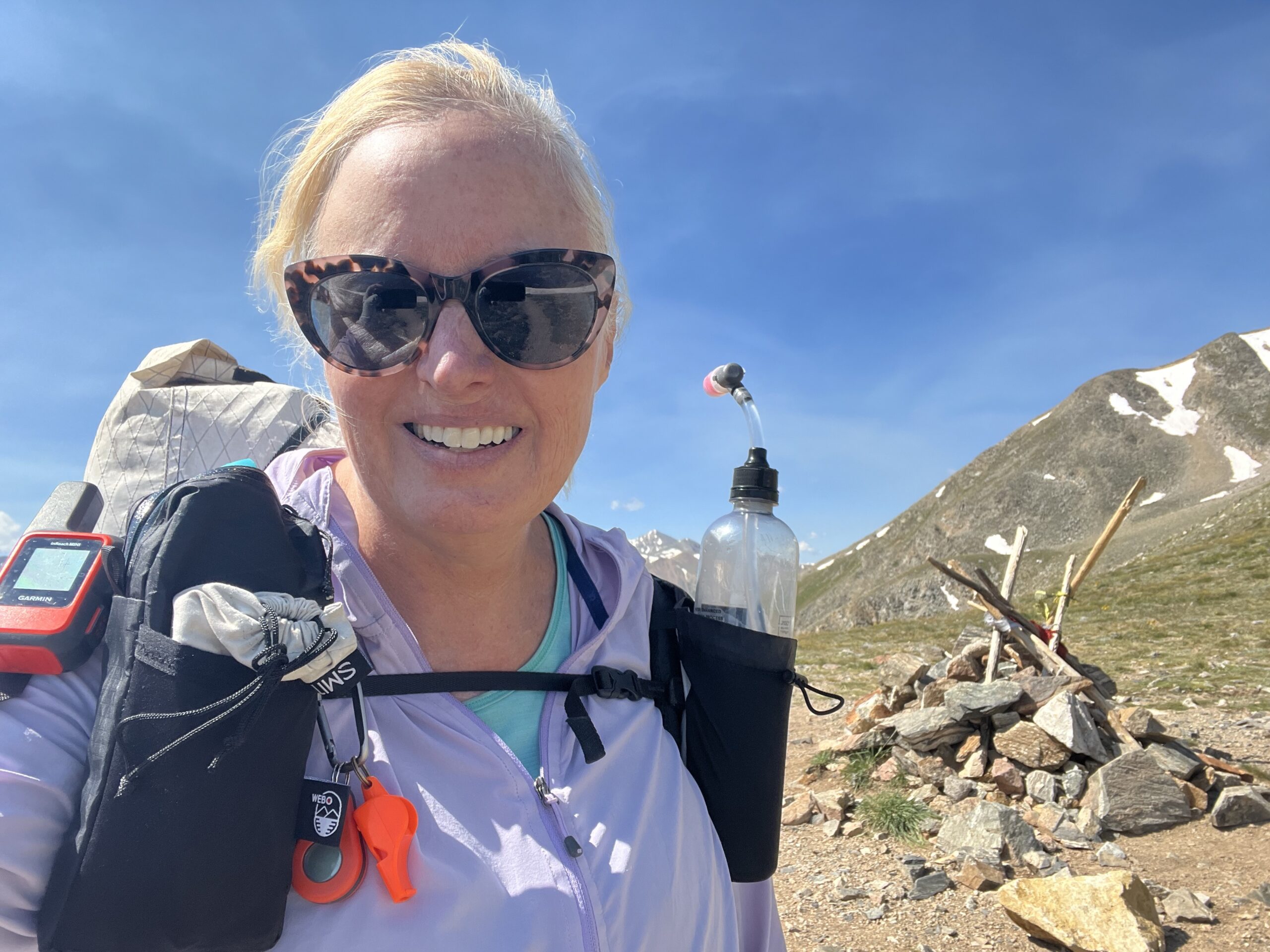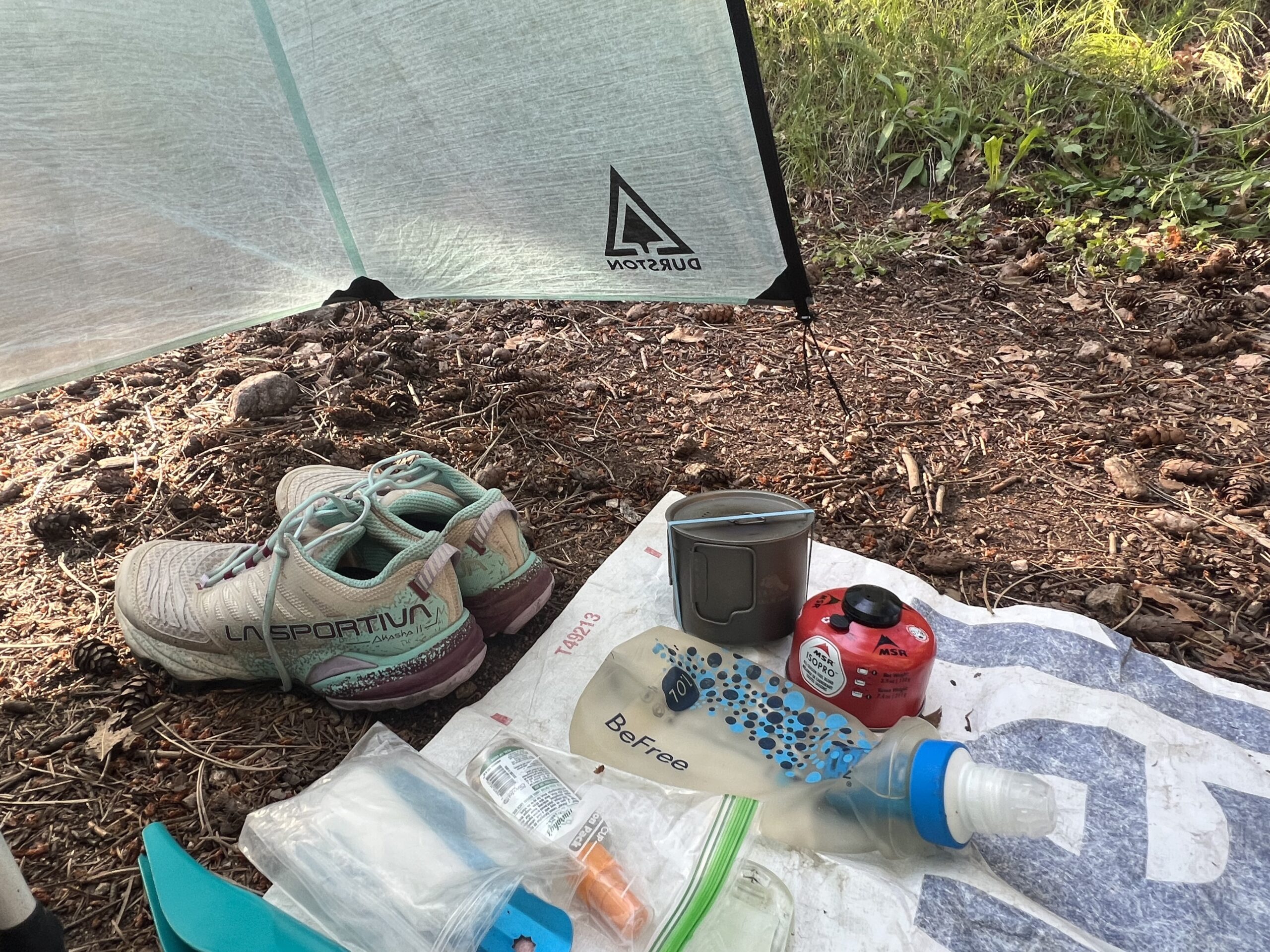Is Hiking Alone a Mistake? Colorado Trail Thru-Hike, Part 4
As I approach the 200-mile mark, my Colorado Trail thru-hike has become a more solitary adventure than I expected. While I always planned on hiking alone, I assumed I’d get to know other hikers along the way.
Since my Appalachian Trail thru-hike in 2018, I’ve come to enjoy hiking solo. Back then, I avoided joining up with a trail family (“tramily”) until the 100 Mile Wilderness. It wasn’t that I didn’t enjoy company, I just preferred to hike alone during the day and see my friends in camp at night.
“I’ll be the weird aunt you only see at the holidays,” I joked when talk turned to forming tramilies.
When friends and strangers express concern about my being a solo female backpacker, my stock response is “It’s fine, I’ll be hiking with lots of friends I haven’t met yet.”
That wasn’t turning out to be the case this year. Last year when I first attempted the Colorado Trail, hikers were everywhere. Now, I’d go hours – if not days – without seeing another backpacker. Where was everyone?
Alone in the Wilderness
Oddly, there were plenty of people in the hostels when I stopped in trail towns, and I enjoyed getting the know them. Once I was back on the trail, I often felt alone in the wilderness.
Camping by myself doesn’t phase me as long as I don’t arrive too early and find myself with nothing to do. If I time it right, I do my camp chores, eat dinner, and turn in for the night. Hike enough miles, and 7 p.m. seems like the perfect hour to crash.
When it’s just me and nature, I often enjoy epic sleep. (2 hours of REM, yes please!) I awaken with the sun, feeling refreshed and ready for a new day.
But night after night, I found I miss company and conversation.
Days were quiet, too.
Sitting alone on a mountaintop, I enjoyed second breakfast with an incomparable view and the sense that I was the only soul around. I felt the same way on an early morning walk across miles of fields where cattle grazed. It was just me, the cows, several birds, and a solitary rabbit.
Hiking alone so much was peaceful, and also a little scary. As much as I enjoyed trekking along in silence, I wondered what would happen if I had a problem. My Garmin InReach gave me a sense of security, although it couldn’t replace sharing the experience of this magical trail with someone else.
Truth be told, hiking solo was getting a little lonely.
It’s All Good Until You Get Lost
There are two ways to get lost when hiking alone. One is when you misplace the trail (I did one day) and the other is when you retreat into your head (which I also did frequently).
Being physically lost or more accurately for me, losing the trail, is a clear problem that needs to be solved. Staying calm and rational helps. The day I wandered off trail I had just crossed a large snow bank. The path diverted from the trail, and I mistakenly assumed a long swath of eroded dirt at the end was the trail.
It wasn’t.
I’d gone a good way before I realized this, and I could not see the trail at all. Far Out didn’t help, its GPS function was malfunctioning. The app kept showing I was getting closer to the trail, regardless of whether I hiked to my left or turned around and hiked to my right.
Is the trail by the mountain? Yes! Away from the mountain? Also yes. Grrrr!
Above me was the snow bank I crossed, below me was a lovely lake. “I could just stop and camp there,” I thought, “then find the trail in the morning.” The idea was tempting, however, I didn’t like the unsettled feeling of being “lost.”
It’s helpful when other hikers are about, you can see them on the path ahead or behind and know which way the trail goes. With no one around, I was on my own. I had no cell service to load a satellite map, just Far Our and my Colorado Trail data book.
Eventually, I used these tools to determine that the trail wound around the right side of the lake. I couldn’t see it, but I knew if I bushwhacked across a small creek and up a hill, I’d probably reconnect with the trail.
I did, ending my wayward adventure.
Lost in My Head
While my body was now where it was supposed to be, my mind was wandering. In fact, it often wandered in the hours I hiked alone, going to shadowy places I didn’t enjoy.
The self-talk I engaged in was not helpful and hard to shake. “What if…” my mind wondered, leaping to any number of worst-case scenarios for someone hiking alone. I’d mentally rehearse my contingency plans, reassuring myself that my Garmin would work or someone would come along (even if I’d only seen 2 hikers that day).
Even more daunting than habitual catastrophizing was the mental abuse I inflicted on myself. “You’re too old for this,” my negative ego would say. “You’re not in good enough shape,” or “You shouldn’t be out here,” or “You’ll never finish,” it continued.
Sometimes the sight of a deer or a chattering marmot would break the dark spell and I’d be fully present and joyful again. On other days, like when I stopped a few miles before Cottonwood Pass due to weather, my salvation unexpectedly came from other hikers.
One “Dumb Decision” a Day is Enough
I was self-flagellating for “being a wimp,” that evening as I sat in camp, worrying about the weather and wondering if I should be hiking alone. “Would the storm even come at all?” “Maybe I should have hiked on?”
At 12,126′ high and well above the tree line, Cottonwood Pass was where I ended my thru-hike attempt the previous year. It was a major milestone in my mind and it hurt to postpone reaching the pass one more day, especially when I was just a couple of miles away.
I was ready to tread on fresh trail; I needed to make forward progress and move beyond my prior failure. Yet here I was, waiting out a storm alone, feeling over-cautious and doubting my instincts.
Then a young couple appeared, heading NOBO, or so I thought. Turns out they were SOBO like me, but had passed the campsite and stopped higher up to watch the impending storm. As the clouds gathered, they decided to come back down and camp.
I told them I wasn’t sure if I made the right call to stop when I did, and they said, “We already made one dumb decision today, we’re not going to make another.”
“What happened?” I asked. They explained how they tackled the steep snow cornice on Lake Ann Pass at 6:30 in the morning. It was icy and dangerous and they immediately regretted it, even though they made it up safely. I could understand, that cornice terrified me when I did it the day before at midday in better conditions.
A little while later, the sky opened up with a tremendous rumble. The storm had arrived, calming the thunder in my head. I had made the right call, after all.
And I wasn’t alone.
(Want to start this series at the beginning? Start here.)
This website contains affiliate links, which means The Trek may receive a percentage of any product or service you purchase using the links in the articles or advertisements. The buyer pays the same price as they would otherwise, and your purchase helps to support The Trek's ongoing goal to serve you quality backpacking advice and information. Thanks for your support!
To learn more, please visit the About This Site page.

 ">
">





